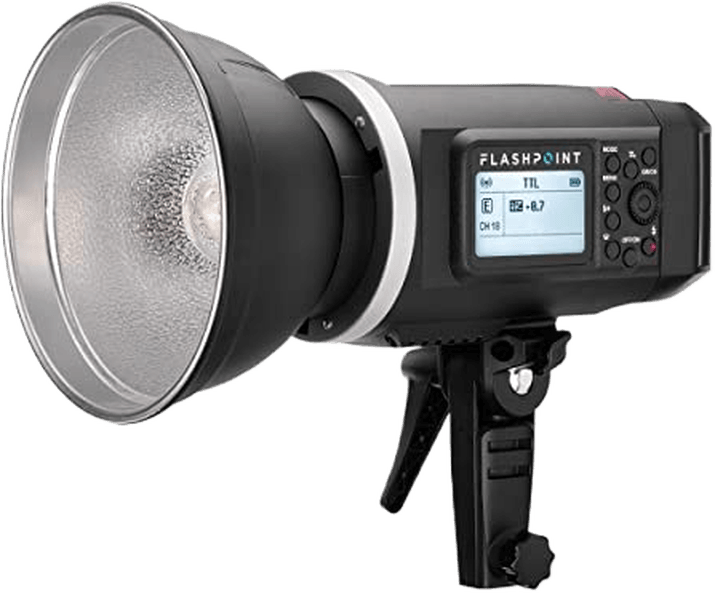What is high speed sync? Simply put, it’s a way to use your flash at shutter speeds faster than the camera’s regular sync speed. This opens up a world of creative possibilities, because you can now use flash to freeze action or create more natural-looking light indoors
But there’s more to it than that. In this article, we’ll take a look at what high speed sync is, how it works, and some of the best ways to use it in your photography.

High-speed sync (HSS) allows you to sync the light from a flash when using a shutter speed faster than your camera’s native sync.
We know that most DSLRs have a native sync speed of 1/250th of a second. Anything faster is beyond the camera’s ability to sync with flash. It will likely cause unwanted effects. Using a higher shutter speed than your camera’s native sync can result in over-exposed images. These sometimes produce black bars across the image. These are created by the flash only partly illuminating the sensor.
These areas are where the camera’s shutter curtains stop the flash. This prevents the flash from exposing the digital sensor. You could use a neutral density filter but still will not have full control over your settings. A better alternative is to use HSS.

Shooting anything above 1/250th is unmanageable with normal Speedlight or strobe flash. But why?
With faster shutter speeds, there is no opportunity for the flash to expose onto the sensor. This is because of how close each shutter curtain is to the other and the short flash duration. The single burst from the flash will then only expose onto a small part of the sensor.
High-speed sync forces the flash to fire many bursts of light throughout exposure time. When it does so, it creates an even distribution of light across the sensor.

There are many different situations to consider high speed sync in tricky lighting conditions.
In conditions where your aperture (f-stop) has priority, using HSS will give you greater control over your scene. It allows the use of a wider aperture without over-exposing the image. This is often the case with bright scenes with a soft focus on your subject. It can also be for when you need a shallow depth of field in the background.
In conditions where your shutter speed has priority, you will need to use a fast shutter speed. Using HSS allows you to use the appropriate shutter speed (1/500 and up, most likely) without causing any unwanted black streaks.
You will want to use HSS whenever a situation requires you to sync flash with a higher shutter speed than your camera’s native flash sync speed.

If you are taking wide-aperture portraits outside in ambient light, you will likely need to compensate with a high shutter speed. Taking your shot at f 4 or lower in bright sunlight can result in unflattering shadows on your subject’s face. It can also blow out the highlights in your background. Using flash is a great way to resolve these issues.
So how can we control our scene using HSS to balance foreground, background, and ambient light for an even exposure? You first need a flash lighting system that supports HSS.
The two main components are:
No two products are the same, so you will want to buy from manufacturers that are industry tried and tested. For reliable strobes and Speedlights, you should consider Profoto, Flashpoint and Godox.
First, position your model in the shade, out of any direct sunlight that will cause unflattering highlights and shadows. Then meter your exposure to the ambient light in the background.
You should aim to get the depth of field you want first. For portrait photography, you will want to use a wide aperture of between f 1.4 and f 2.8, and this is where having a 50mm or 85mm prime lens is beneficial. Selecting a wider aperture in this range will place the plane of focus on your subject and give you a shallow depth of field. Use ISO 200 or lower to keep your image quality high and pixel noise low.
Next, set up your light.
Attach the receiver to your camera and turn everything on. Hold down the high-speed sync button on the receiver to activate high-speed sync mode. Press the HSS button on the back of the light.
The goal is to balance the foreground and background exposures by adjusting the flash power. Start at H7 and then either increase up to full power or decrease the power until you have a balanced exposure.

If you are a portrait photographer and use natural light in your portraits, consider adding a high-speed sync flash system to your set of tools. By using flash in HSS mode you can resolve tricky lighting conditions. You can also increase your shutter speed, use a wide aperture, and balance your foreground and background.
To learn even more tips & tricks that get you off auto-mode read our Photography Unlocked ebook.